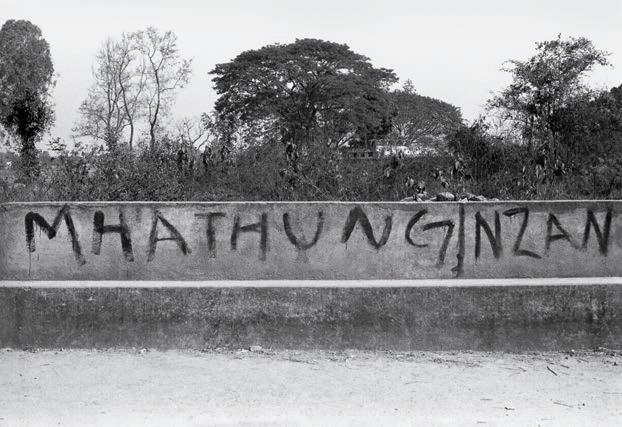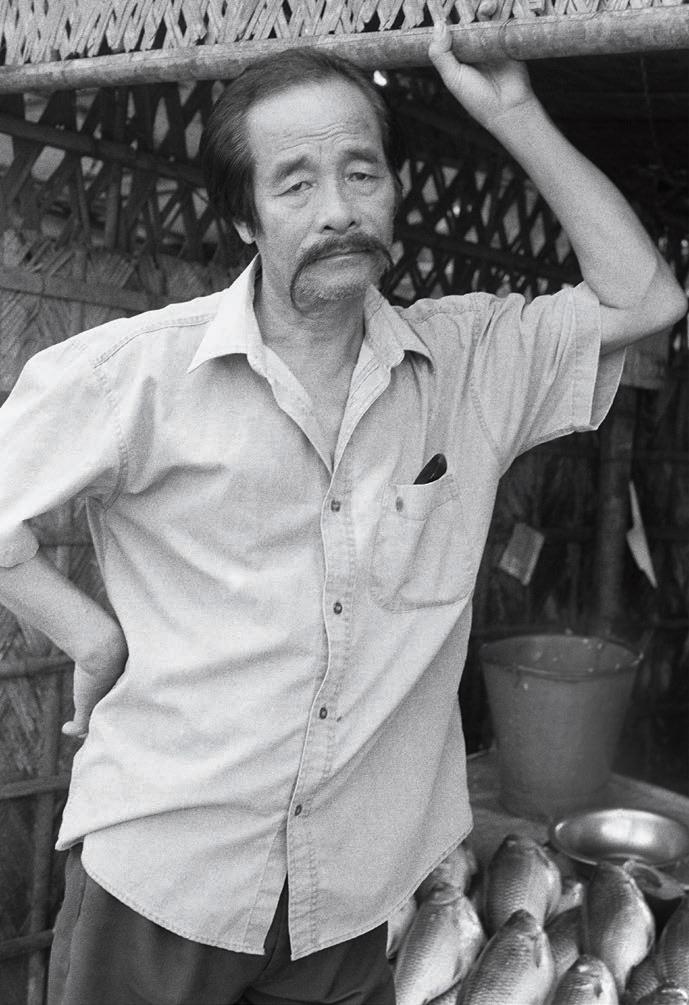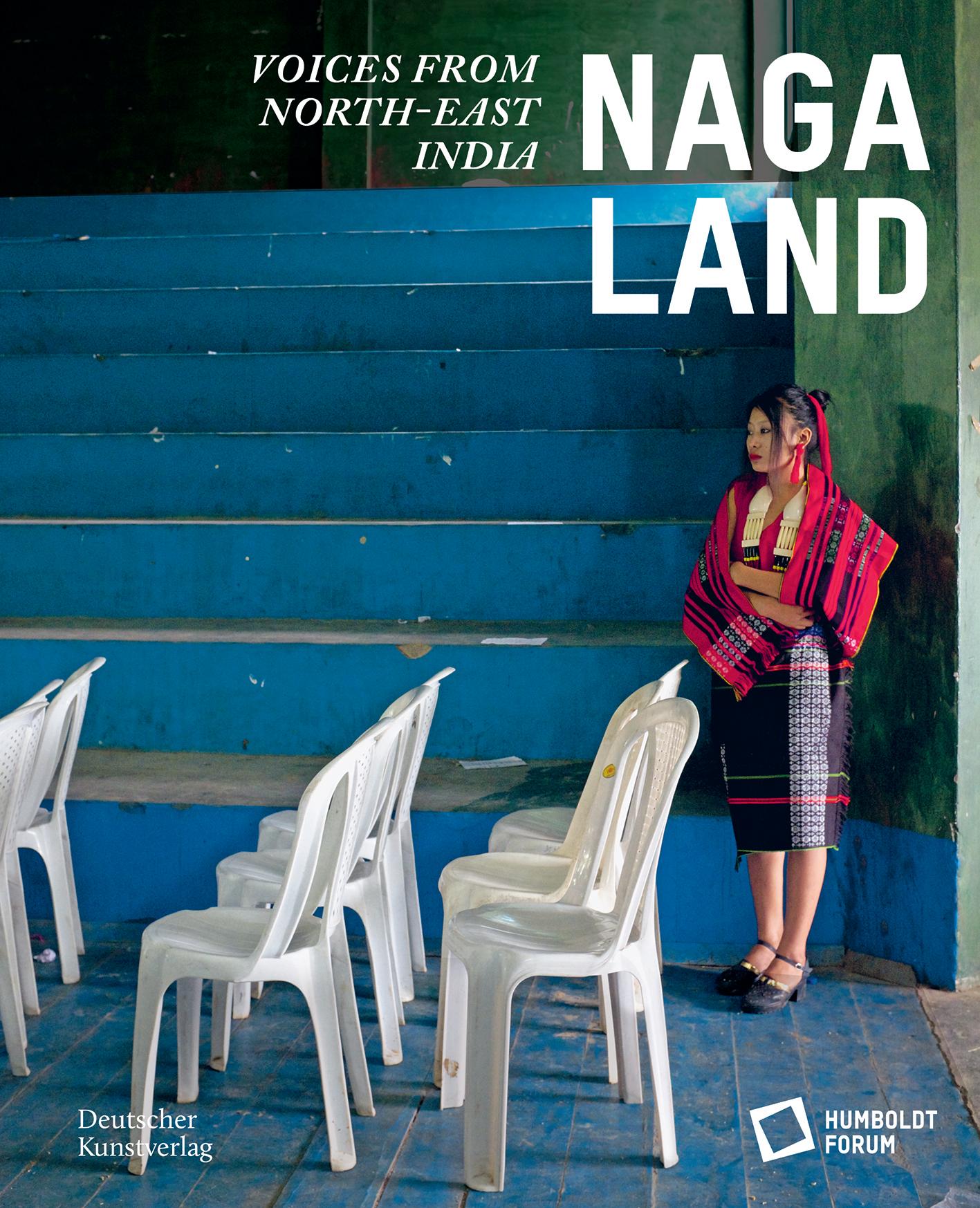
Roland
The Role of Social Media in Relation to Textiles and Fashion, the Creation of ‘Naganess’ on Social Media
Theyiesinuo Keditsu
Elisabeth Seyerl-Langkamp
of
Kathrin Grotz


Roland
The Role of Social Media in Relation to Textiles and Fashion, the Creation of ‘Naganess’ on Social Media
Theyiesinuo Keditsu
Elisabeth Seyerl-Langkamp
of
Kathrin Grotz
Hartmut Dorgerloh and Lars-Christian Koch
Tradition and identity, often mentioned in one breath, seem to constitute an interdependent concept pair. Yet, (why) is this the case? What is hidden behind a ‘tradition’? A cultural guide pattern? A construct – mutable or unvarying? And what exactly does ‘identity’ mean? ‘Being the same’? How many identities can there be, how large or small in scope can they be, how changeable are they and how formative for the way an individual, a family, a group, a quite large community or a state view themselves culturally and societally?
‘This is a question I’m still grappling with, because I cannot define what identity is, because for me it’s so fluid,’ says Zubeni Lotha, art historian and art photographer from Dimapur, who has co-curated the exhibition Naga Land: Voices from North-east India with Roland Platz, curator at the Berlin Ethnological Museum. ‘I don’t know what being a Naga means. ... Because I don’t know what a Naga is supposed to behave like, act like, look like, eat, walk sleep.’1 Against the background of her personal identity as a Na-ga, she goes into the question of who the Naga are and how a presumably collective Naga culture is expressed.
Seven hundred and fifty scheduled tribes are recorded as living in India, which amounts to about 8.6 percent of the overall population. These indigenous societies belong to a variety of different ethnic groups, live in settlement areas that are separated from each other, all with languages, cultures and social structures of their own, as is the case of the Tibeto-Burman Naga group in the north-east – three to four million people, who live in Nagaland and in the abutting Indian states as well as Myanmar. Nor are they a homogeneous indigenous minority; quite the contrary, they fall into more than thirty groups, each with its own language and dia-
lects. For all their differences, these local identities are linked by a primary consciousness of being Naga. This awareness is expressed in their material culture, in performances and observances and the pursuit of common political goals. But what exactly is its essence?
In the days of India’s colonial dependency, drawn borders reinforced cultural and political differences and isolated the Naga settlement area as well: the introduction of an inner line through the area under British administration in 1873 made entering and leaving this mountainous region more difficult. Synchronously the autonomous Naga villages came under the sway of North American Baptist missionaries. Taking harsh measures to suppress local animist thinking and rituals, they converted the Naga to Christianity. About 90 percent of the state’s population are now Christians rather than Hindus. Arousing awareness of traditions and an identity the state’s inhabitants have in common also entails demarcation from what recognisably does not belong and defining what does.
The idea of a linking Naga identity became the driving force behind movements for political autonomy. Incorporation of the Naga settlement area in the nation state while India was in the process of achieving independence increased Naga resistance from 1947 and sparked armed struggles for independence from the Indian centralised government. As a concession to the Naga the state of Nagaland was created in 1963 along with the promise of a large degree of autonomy.
Against that backdrop, studying one of Europe’s earliest and most extensive historical collections of objects and artefacts from Naga cultures leads to the core of a link between identity and tradition. The Ethnologisches Museum Berlin collection comprises some 1,300 Naga objects: textiles, jewellery, utensils and weapons as well as historic photographs, which no one in Nagaland knew existed until 2014.2 Even now the exact circumstances under which they were acquired remain for the most part unclarified. The first collection of objects was assembled in 1878 by Adolf Bastian, founding director of the Museum für Völkerkunde, on his return to Berlin from travels in the region. Those
historical artefacts bridge past and present in Naga Land: Voices from North-east India. Since 2015, we have been looking through them for the exhibition jointly with representatives of the Naga; the exhibits have been researched and confronted with contemporary artefacts. Bringing forms to life by so vividly reviving and recreating them memorably reveals the mutability and diversity of tradition and identity, which, at once impoverishment and enrichment, possess the potential for reinventing the past and sustainably shaping future developments.
Naga Land: Voices from North-east India is an interdisciplinary exhibition that has been organised as a collective project involving curators at the Berlin Ethnological Museum and the Humboldt Forum Foundation in the Berlin Palace together with Zubeni Lotha, artist and co-curator. Our warmest thanks to all those who have collaborated on all stages of this undertaking.
1 Quotation translated by L. Goldenbaum. Zubeni Lotha, in ‘The Hutton Lectures’, Kohima Institute, Nagaland, 3 December 2014. Many thanks to Michael Heneise for this reference. Quoted in: Marion Wettstein, ‘How Ethnic Identity Becomes Real: The Enactment of Identity Roles and the Material Manifestation of
Shifting Identities Among the Nagas’, Asian Ethnicity 17, no. 3 (201): 384–399, here 384.
2 ‘Nagaland Connections –Zum Aufbau einer Kooperation zwischen dem Ethnologischen Museum Berlin und Angehörigen der Naga-Community’, in Baessler-Archiv, 2018/19, Vol. 65, pp. 197–202.

Roland Platz
This book is published to accompany Naga Land: Voices from North-east India, an exhibition at the Berlin Humboldt Forum. It covers, or goes deeper into, subjects for which there was no space at the exhibition, or which could only be briefly touched on.
The exhibition is a collaborative project shared by a team of German curators and a curator from Nagaland. Thematically, the project deals with the question of whether there is an identity all Naga have in common and the role their material culture and sociocultural traditions play in such an identity. The Naga, representative of many other minorities in South and South-east Asia, attempt to demarcate themselves from the Indian social majority even though they also form part of it. Yet, who are the Naga in fact?
The Naga consist of more than thirty ethnic groups. They all belong to the Tibeto-Burman language family but for the most part do not understand each other’s individual languages. Along with English, Nagamese has become the lingua franca among them. Nagamese is a composite language made up of Assamese, Bengali, Nepali and English. All Naga groups are traditionally acephalous societies, that is, societies lacking centralised state structures. Some writers on the subjects also speak of ‘village republics’ in this connection. 1 Most Naga settlements are relatively large, comprising at least one hundred households, and are organised by clans, each of which lives in a particular part of a village (khel). Before the advent of the British, ethnicity was far less important: clan, village and familial affiliations mattered far more then.2 However, ethnicity has become a major identity marker. This is shown by the way the Naga settle by ethnicity in the larger cities of the region nowadays.
All Naga groups sporadically practised headhunting well into the twentieth century. Headhunting was not so much a religious component of Naga culture but a social one that served primarily to enhance prestige. 3 The Naga traditionally practised slash-andburn agriculture4 (jum) with swidden fields of mountain rice, their most important crop, later followed also by rice grown in paddy fields in areas suitable for semiaquatic growing conditions. The settlement area of the three to four million Naga stretches across northeast India to include the modern Indian states of Nagaland, Assam, Arunachal Pradesh and Manipur as well as part of north-western Myanmar. The Naga constitute the majority population only in the state of Nagaland. ‘Naga’ is a self-definition that has political connotations and is used flexibly. Hence the population count varies for the Naga, linked with constantly changing group names and alliances.
The colonial and post-colonial history of the Naga is a history of resistance, which was directed primarily against the Indian government after India became independent in 1947. It should be borne in mind that the Naga had already fought battles against the British? in the nineteenth century. Between 1835 and 1855 alone there were ten British ‘punitive expeditions’, as they were known, which resulted in villages being burnt down.5 In the twentieth century, too, military operations were still sporadically targeting Naga groups who, in defiance of the British ban on headhunting, continued to practise it. Nonetheless the Naga managed to retain a certain degree of autonomy in the colonial era in line with the British divide et impera strategy. At the same time, there was quite a large region designated an ‘unadministered area’. It stretched along what is now the border with Myanmar, and the British never succeeded in bringing it under control. In the 1950s, the Naga began to engage in armed conflict with the Indian government that raged most fiercely in the 1970s and 1980s. Moreover, in the 1990s, fighting between rival Naga groups flared up with increasing frequency.6 Since the armistice agreed in 1997 between the Indian government

and the National Socialist Council of Nagalim (NSCN-IM), the most important resistance group, which was led by Isak Swu and Thuingaleng Muivah, the situation has improved.7 Other rebel factions have, however, continued to fight, and there is still no prospect of a comprehensive political solution. As recently as December 2021 thirteen Naga who had been ‘mistaken’ for rebels were shot by the Assam Rifles, Indian special units. There were more Naga casualties in the unrest that followed.
The exhibition at the Humboldt Forum is based on the nineteenth-century Naga collection at the Berlin Ethnological Museum and contemporary objects acquired in Nagaland in 2019. Most of the objects on display are textiles. Changes in the techniques and materials used for clothing and its function are easy to read from these artefacts. Traditional customs and adaptation to changes in the way of living overlap. The exhibition also addresses the role of Christianity, the earlier significance of headhunting, the tattoo revival, fashion and social media. In addition, the use of vegetal materials and the links via those materials to a modern globalised world with-
in Naga society are vividly shown in the ‘Botany’ section. Representing the society of origin, the artist Zubeni Lotha is showing works of her own. Zubeni Lotha cannot, of course, speak for the Naga in their entirety. More Naga voices can be heard on subjects such as Christianity, the significance of the exhibition for the Naga and headhunting in videos and audio stations at the exhibition. This book, too, is a collaborative project because most of the essays are the work of Naga writers reporting from the insider perspective. The primary objective is to involve people on site and also include their texts in this publication. Some of the writers are known worldwide. Dolly Kikon, for instance, writes about her role as a Naga anthropologist. Iris Odyuo, who has visited the Ethnologische Museum in Berlin in person, addresses the importance of European Naga collections to Naga living at home. Aküm Longchari, publisher of the
Fig. 2 Machete sheath (nok leptsü), Ao Naga, Nagaland, latter half 19th century, wood, cloth, cowrie shell
Samuel E. Peal Collection, donated in 1896 to the Royal Museum of Ethnology, Inv. No. IC28498, Staatliche Museen zu Berlin, Ethnologisches Museum
Fig. 3 Necklace for women (wamkum), Ao Naga, Molung Kimong, Nagaland, latter half 19th century, snail shells, carnelian stones, seeds
Adolf Bastian Collection, sold in 1879 to the Royal Museum of Ethnology, Inv. No. IC8476, Staatliche Museen zu Berlin, Ethnologisches Museum

Morung Express, a Nagaland daily, analyses the traces of colonialism that are still palpably present today. The Naga writer Theyiesinuo Keditsu devotes herself to the subject of fashion and social media from the standpoint of identity issues whereas Elisabeth Seyerl-Langkamp goes into the meaning of Naga textiles from the colonial era to the present. Kathrin Grotz sheds light on the history of the collection from the aspect of botanical research in Nagaland. Roland Platz writes about the history of the collection and its provenance as well as its significance from the Western ethnological viewpoint. Zubeni Lotha, co-curator from Nagaland, describes her personal development as an artist and photographer and her connection with the political history of the Naga from the colonial past to the present.
1 Oppitz 2008, p. 12; Wouters 2017.
2 Stockhausen, in Oppitz 2008, p. 58.
3 Jacobs 2012, pp. 135–150.
4 Slash-and-burn agriculture, which leaves the root systems and stumps of trees
in the soil. Vegetation is simply burnt away, with the ash serving as a natural fertiliser.
5 Drouyer 2016, p. 13.
6 Ibid., p. 23.
7 Phanjoubam 2016, p. 197.
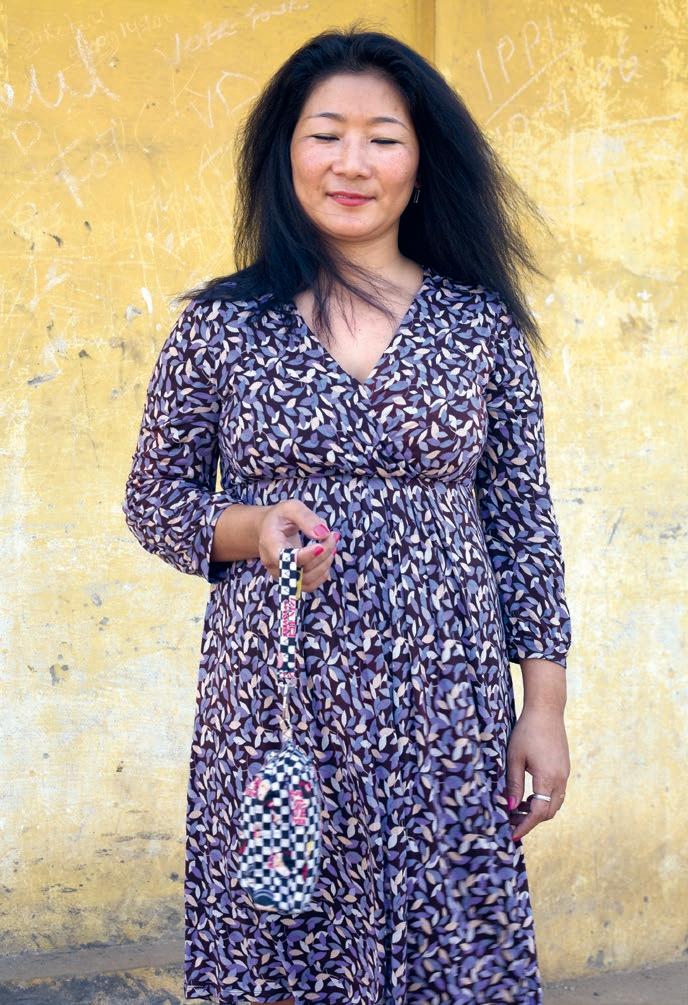
Zubeni Lotha
How do we memorialise our past in photographs? What does it mean to talk about the past in photography when every moment captured becomes the immediate past and we move on to the next photograph or image thus memorialising the past in an instant? Can the past be so immediate? Are the photographs truly a representation of our memories? When we talk of memories we talk of the authenticity of memories, but sometimes memories can also be about forgetting. They are not always about remembering. So, when we look at a photograph, what are we choosing to remember and to forget?
What am I choosing to represent when I take a photograph? Am I consciously memorialising the past? What about the anthropological photographs of the Nagas? When I look at them today, what am I remembering of the past? Do the photographs accurately represent the past for me or are they just photographs without any emotional or historical meaning? This leads me to question whether photographs are historical or emotional or both.
Fig. 1–3 Zubeni Lotha,
When I started to photograph my hometown of Dimapur from my memories, I slowly became more aware of the place in a way that I never was before. Of course, places had changed over the years, but that wasn’t what surprised me; it was my associations that surprised me. I always saw the town through rose-tinted lenses. Despite most of my childhood being spent indoors under strict instructions not to venture out by myself, I never questioned the restrictions and Dimapur was a safe bubble for me. I never questioned the palpable fear around me as I was growing up, from growing tensions between the Indian armies and the Naga freedom fighters.
My parents tried to shield us from the everpresent violence by sending us to boarding schools in another city. The freedom struggle of the Nagas for a sovereign nation apart from India was always in the background of our conversations, as well as the restrictive actions of my parents because the times were tumultuous and violence was never far off. But my holidays away from my boarding school were a time to be home with family and friends, and to read and watch television and be lazy – so oblivious to the world collapsing around so many people. The town, I realised as I started to photograph, was a blur to me. Most of my memories were unravelling, bringing to my mind other memories, which I had chosen to ignore, to not speak of or think of, in the process forgetting some of my past. Memories also can show our prejudices and biases, our own misconceptions, and the way we view the world around us. Photographing Dimapur also allowed me talk about the history of the city and engage with it in a way I had not attempted before, when I just wanted to escape from it. There were a lot of hidden memories which I realised many people were scared or ashamed to talk about, but they needed to be shared. There were so many broken dreams and shattered hopes, and I realised this town was like any other place with all of its hopes and fears and joys mingled together, weaving a fabric of different lives, creating unique histories and stories. My photographs were becoming a past the moment my fingers pressed the shutter down with a finality.
Looking at the anthropological photographs of the Nagas from the colonial era, I always catch myself trying to imagine their lives. The images should be talking to me about my ancestors’ lives, their stories, but it is difficult for me to connect with these photographs. They show warrior-like men finely attired in elaborate headgear, and sometimes they have tattoos on their bodies or faces, sometimes they show them with their javelin held high, as if to fling it in the air at some unseen enemy. The women decked in beautiful jewellery or partially undressed, exposing some of their body, unconscious of their
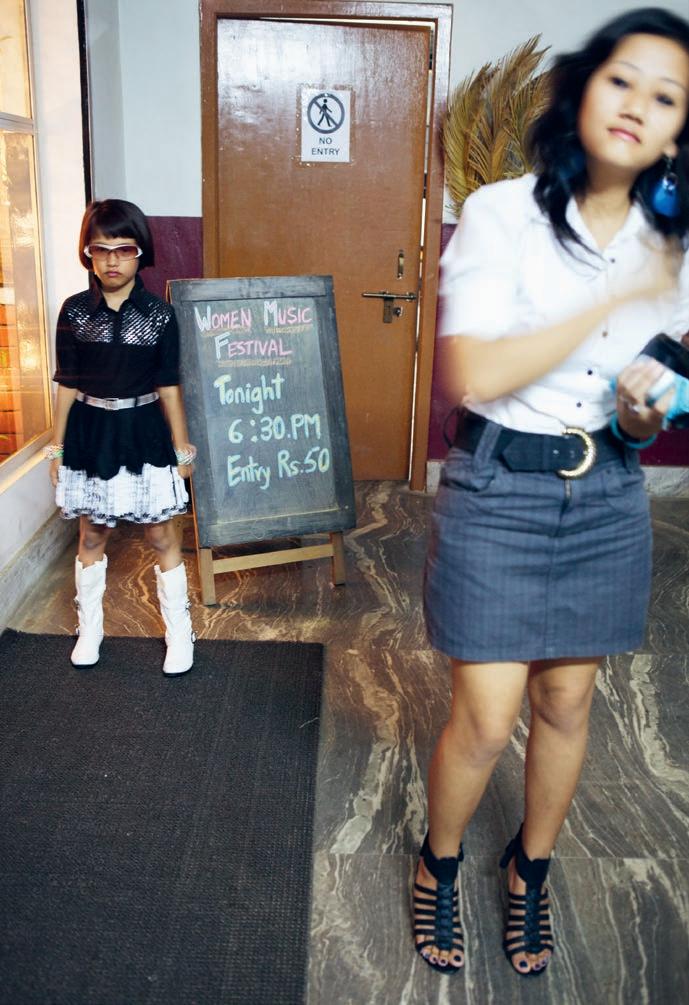
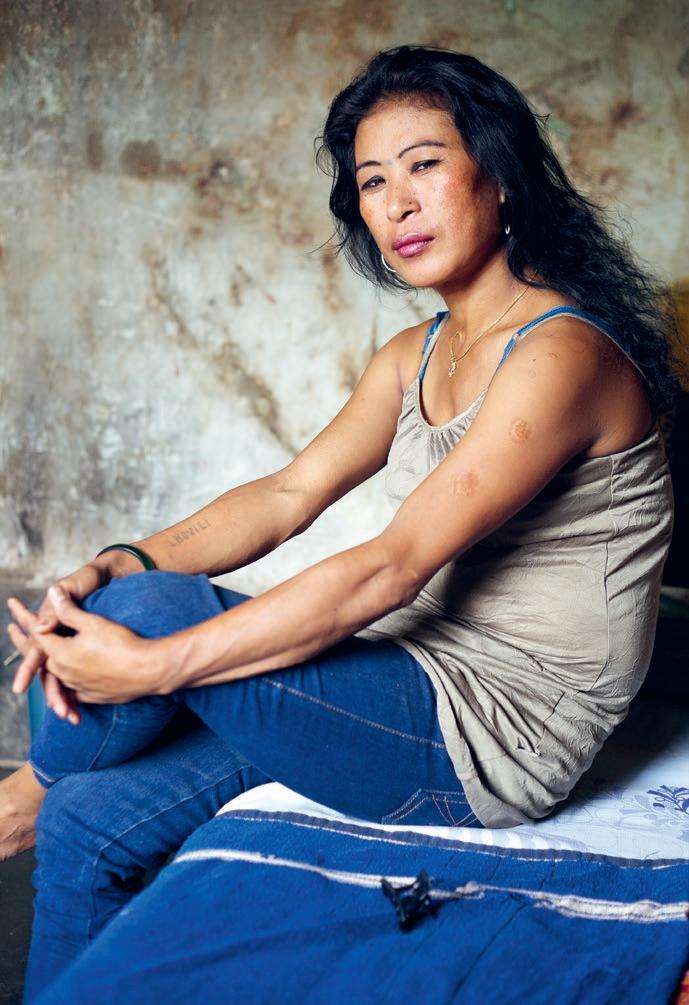
bareness. Many photographs showing men and women richly dressed in traditional costume in the act of dancing. All the photographs I sense are meant to evoke a sense of nostalgia for a way of life fast disappearing. Sometimes the frames are too narrow and I cannot see beyond the photographs. I don’t know what I am supposed to be imagining when I look at such beautiful, exotic photographs, which are meant to be a big part of my history. I can always sense the power positions when I look at such photographs: the privileged ‘white’ colonial person with his new modern technology peeping into a very simple tribal world far away from all modern progress and technology. It is the technology of the camera and the bearer of that technology that speaks volumes when I look at the colonial/anthropological photographs. Sometimes it makes for uncomfortable viewing, such blatant projection of the roles of power. And the more I look into the historical photographs of the Nagas, the more aware I become of something that as a photographer myself I start to realise, and that is that photographs are not really true representatives of the people photographed or their lives – they are more the photographer’s vision of the world which he or she is seeing.
It is not what is seen in the photographs that captures my attention, but what is left out of the photographs that I start to think about. But then memories are also sometimes not about what we remember, but what we have chosen to forget or what we naturally forget. And maybe we need certain associations to bring back those memories sometimes – maybe that is what my photographs about my hometown did for me.
For the purposes of the questions I posed in the beginning, I have chosen to talk about some of the photographs from my Dimapur project which I started as a way of re-visiting my memories of the town. What sort of memories did such associations bring out in my mind? I also look at some of the historical photographs of the Naga people to explore my questions.
This photograph | fig. 4 | was taken at a building site. The moment I saw the image some-
thing about it struck me, and I knew I had to photograph it. It is just a wall with cement running down the points. This photograph reminded me of the stories I heard from people I met while photographing Dimapur. Two stories in particular stand out. One is about my friend whom I met after many years. She narrated an event in her life about the loss of her brother, which was brutal and horrific. She told me they found his body shot and tossed in the jungle, but even today she has no conclusion to the story because she does not know who shot him or for what reason. The other story is about a person I was introduced to. I saw her in front of the grave of her brother. He was also shot dead when he was just sixteen years old, and he lays buried in the garden of her home – forever a cruel reminder of a life snatched away so young. The 1980s and the 1990s, the time of the exploration of my memories, were very tumultuous decades for the Nagas. Violence did not only mean gun violence or the fierce encounters between the Indian armies and the Naga fighters, it also meant the peak time of drug and alcohol abuse. Through the stories of drug and alcohol abuse one can understand the emotional cruelty that families went through for years. How can such pain and violence be photographed? These are just two stories among the many painful stories of loss. This photograph for me captures the tears of such pain and loss.
Another example of loss and grief is this photograph of graffiti on a wall located in an area which experienced a lot of violence and death during the 1990s | fig. 5 |. The graffiti is of a Lotha Naga name, Mhathung, and Nzan means ‘love’. It could be an ode to a person gone or a loved one remembered – such a fleeting tribute, because that wall no longer exists today.
One photograph is simply a painting I happened to see on a busy roadside | fig. 6 | . It was in a small stand off a busy road where a painter was selling his paintings, almost obscured by moving vehicles and pedestrians going about their busy lives. I saw the painting while stuck in a traffic jam. I parked the car and
Fig. 4–6 Zubeni Lotha, No title

